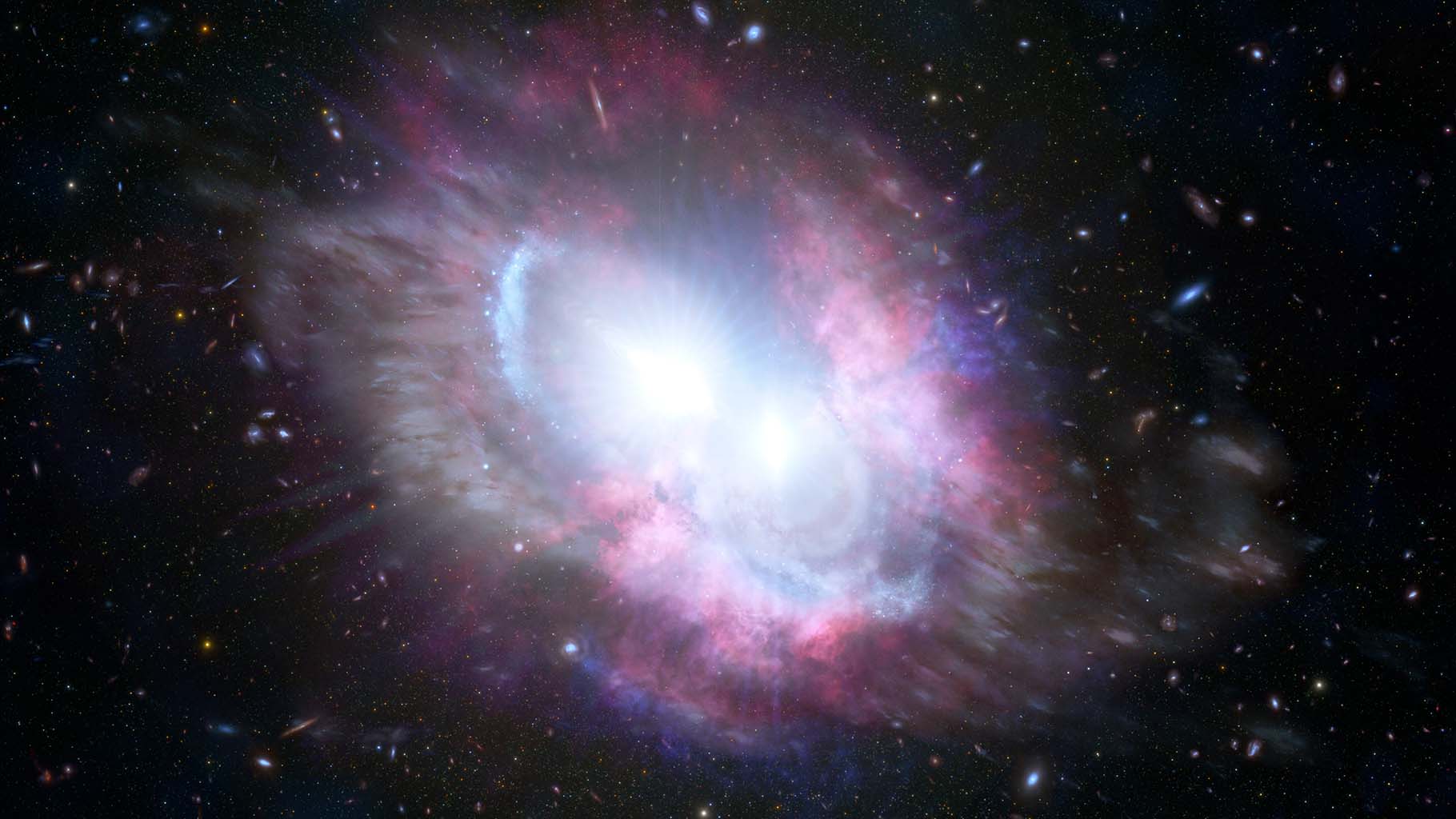NOIRLab: Dual Quasars Blaze Bright at the Center of Merging Galaxies

Astronomers using an array of ground- and space-based telescopes, including Gemini North on Hawai‘i, have uncovered a closely bound duo of energetic quasars — the hallmark of a pair of merging galaxies — seen when the Universe was only three billion years old. This discovery sheds light on the evolution of galaxies at “cosmic noon,” a period in the history of the Universe when galaxies underwent bursts of furious star formation. This merger also represents a system on the verge of becoming a giant elliptical galaxy.
Galaxies grow and evolve by merging with other galaxies, blending their billions of stars, triggering bursts of vigorous star formation, and often fueling their central supermassive black holes to produce luminous quasarsthat outshine the entire galaxy. Some of these mergers eventually go on to become massive elliptical galaxies that contain black holes that are many billions of times the mass of our Sun. Although astronomers have observed a veritable menagerie of merging galaxies with more than one quasar in our own cosmic neighborhood, more distant examples, seen when the Universe was only a quarter of its current age, are quite rare and extremely challenging to find.
By harnessing a bevy of ground- and space-based observatories — including Gemini North, one half of the International Gemini Observatory, operated by NSF’s NOIRLab — a team of astronomers has discovered a closely bound pair of actively feeding supermassive black holes — quasars. This discovery is the first confirmed detection of a pair of supermassive black holes in the same galactic real estate at ‘cosmic noon’ — a period of frenetic star formation at a time when the Universe was only three billion years old.
Previous observations have identified similar systems in the early stages of merging, when the two galaxies could still be considered clearly separate entities. But these new results show a pair of quasars blazing away in such close proximity, a mere 10,000 light-years apart, that their original host galaxies are likely well on their way to becoming a single giant elliptical galaxy.
Searching for pairs of supermassive black holes so close to each other during this early epoch is like trying to find the proverbial needle in a haystack. The challenge is that most black-hole pairs are too close to distinguish individually. To definitively detect such a system, the two supermassive black holes need to be actively accreting and shining as quasars simultaneously, conditions that are extremely rare. Statistically, for every 100 supermassive black holes only one should be actively accreting at a given time.
Astronomers know, however, that the distant Universe should be brimming with pairs of supermassive black holes embedded within merging galaxies. The first hints of such a system were found in data from the NASA/ESA Hubble Space Telescope, which revealed two closely aligned pinpoints of light in the distant Universe.
